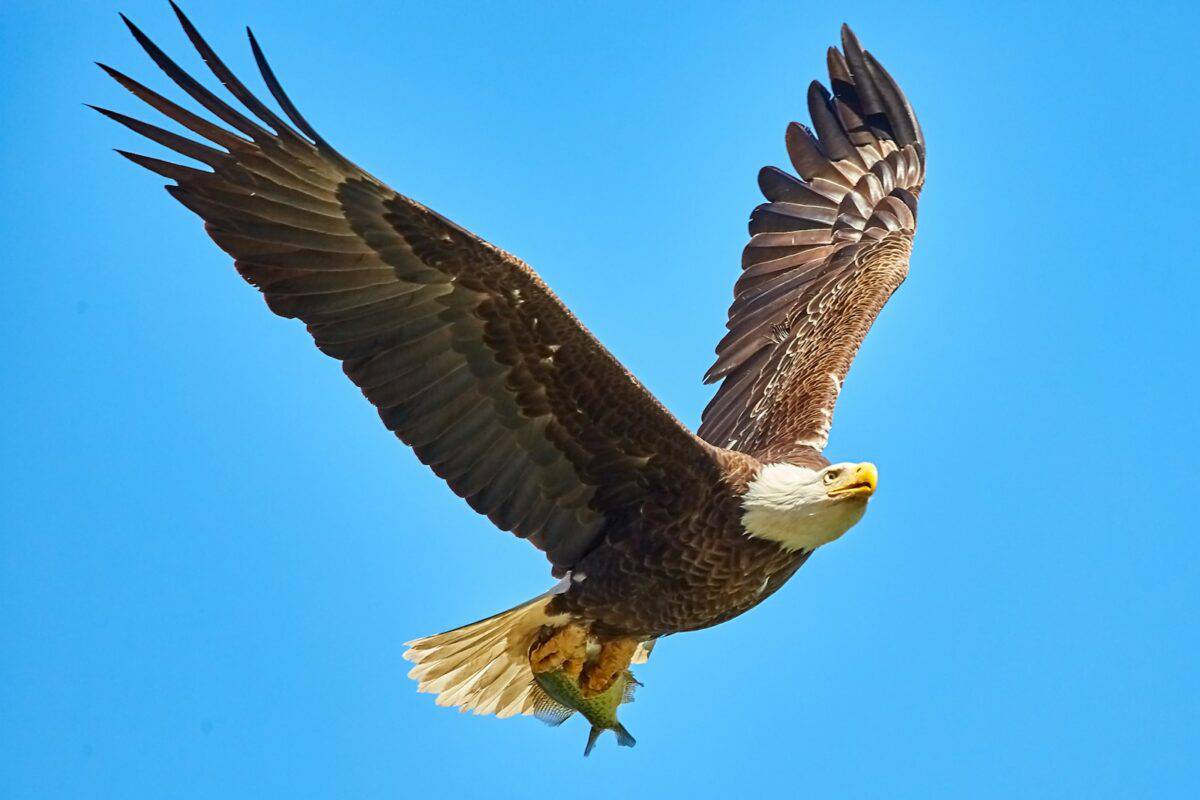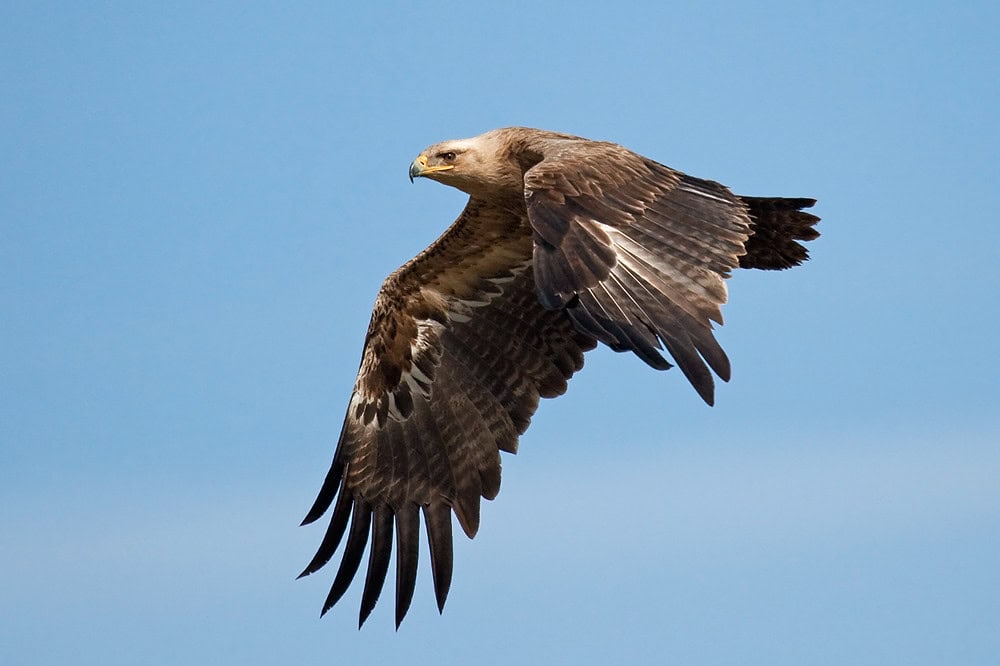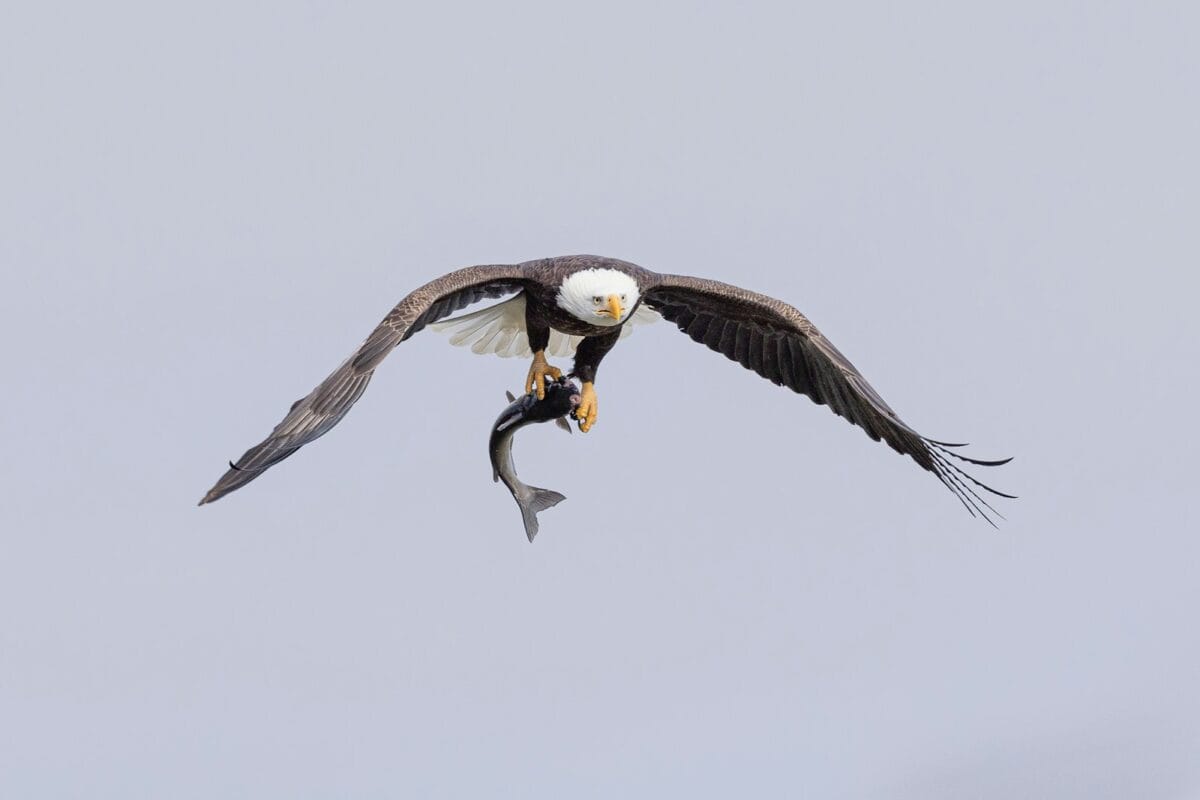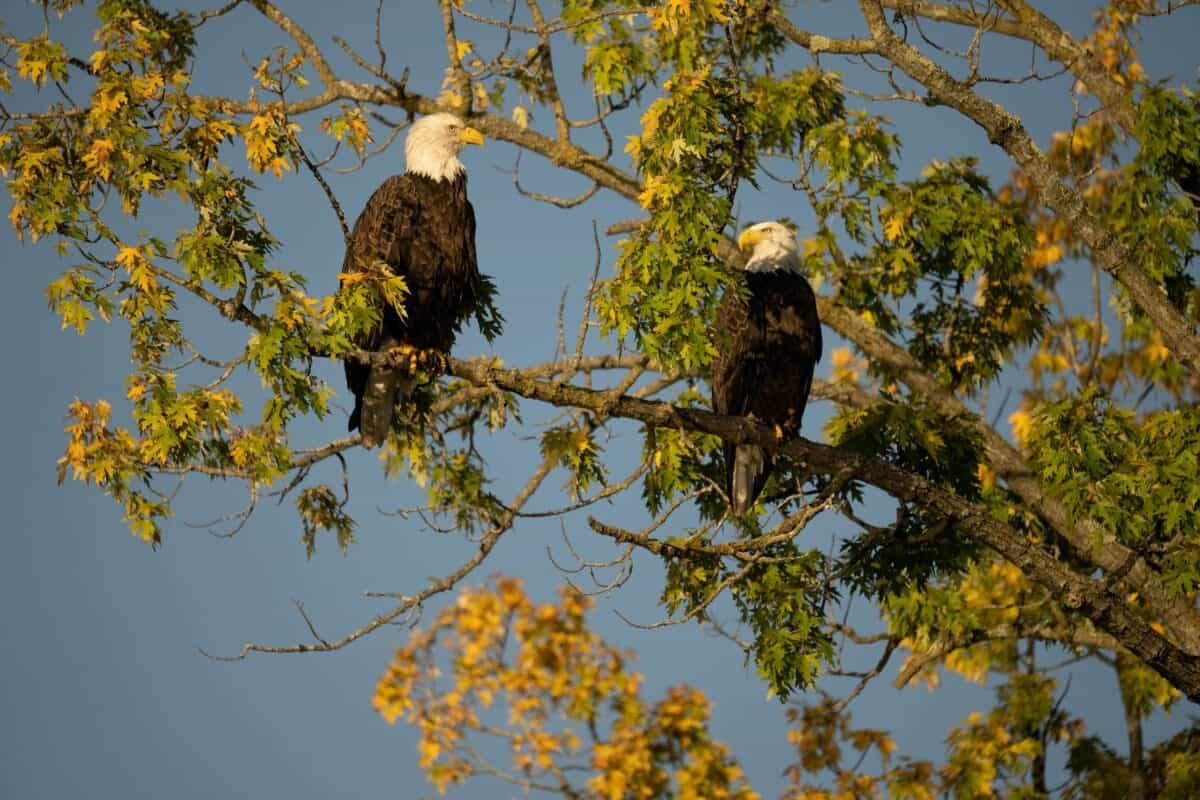Birds of prey captivate our imagination with their keen eyesight, powerful talons, and majestic flight patterns. Among these aerial predators, hawks, eagles, and falcons stand out as the most recognizable and impressive. While many people use these terms interchangeably, these birds belong to distinct families with unique characteristics that set them apart. Understanding the differences between these magnificent raptors not only enhances our appreciation for their specialized adaptations but also helps us identify them in the wild. From hunting techniques to physical attributes, habitat preferences to social behaviors, these birds have evolved specialized traits that make them perfectly adapted to their ecological niches. This comprehensive guide explores 17 key differences between hawks, eagles, and falcons, offering insight into what makes each of these remarkable birds unique in the avian world.
Taxonomic Classification

The first fundamental difference lies in their taxonomic classification. Hawks and eagles both belong to the family Accipitridae, but falcons are classified under the family Falconidae. This separation isn’t arbitrary—it reflects evolutionary divergence that occurred millions of years ago. Genetic studies suggest that falcons are actually more closely related to parrots and songbirds than they are to hawks and eagles. Hawks are typically divided into two groups: buteos (broad-winged soaring hawks) and accipiters (forest-dwelling hawks with shorter wings). Eagles, while part of the Accipitridae family, are generally placed in different genera, including Aquila (true eagles) and Haliaeetus (sea eagles). These taxonomic distinctions are the foundation for many of the physical and behavioral differences observed among these birds.
Wing Shape and Flight Style

Perhaps the most distinctive characteristic that separates these three types of raptors is their wing shape, which directly influences their flight patterns and hunting strategies. Hawks, particularly buteos like the Red-tailed Hawk, have broad, rounded wings with splayed “fingers” at the tips, perfect for soaring on thermal updrafts with minimal energy expenditure. Eagles possess even broader wings with longer primary feathers that form distinct “fingers” when spread, allowing them to soar for hours while surveying vast territories. Falcons, by contrast, have long, narrow, pointed wings shaped like sweeping scimitars. This aerodynamic design enables them to achieve remarkable speeds, particularly in diving flight. The Peregrine Falcon can reach speeds over 240 mph (386 km/h) during its hunting stoop, making it the fastest animal on Earth. These wing adaptations reflect each bird’s evolutionary response to its preferred hunting methods and habitat.
Size and Body Proportions

Size differences among these birds of prey are significant and often help with identification. Eagles are generally the largest of the three, with some species like the Steller’s Sea Eagle weighing up to 20 pounds (9 kg) with wingspans reaching 8 feet (2.4 meters). Their bodies are robust and powerful, with proportionally larger heads and bills. Hawks vary considerably in size but are typically medium-sized raptors. Buteos like the Red-tailed Hawk are larger with wingspans of about 4 feet (1.2 meters), while accipiters like the Sharp-shinned Hawk are smaller and more agile. Falcons exhibit greater diversity in size, from the tiny American Kestrel weighing just a few ounces to the larger Gyrfalcon. However, even the largest falcons are generally smaller than eagles. Falcons typically have sleeker, more streamlined bodies with proportionally longer tails compared to hawks of similar size. These size variations reflect their different ecological niches and hunting strategies.
Beak Structure and Function

The beaks of these raptors have evolved specifically for their feeding habits and reveal important differences. Falcons possess a unique feature not found in hawks or eagles: a specialized “tomial tooth,” which is a notch on the upper mandible used to sever the spinal cord of prey quickly and efficiently. This adaptation allows falcons to kill prey swiftly with minimal struggle. Eagles have massive, powerful beaks designed for tearing large prey and carrion. The beak of a Bald Eagle is robust enough to tear through tough hide and sinew. Hawks have beaks that fall between these extremes—strong enough for dismembering prey but generally not as specialized as either falcons or eagles. Accipiters have relatively smaller beaks proportionate to their head size, while buteos have more substantial beaks. These differences in beak morphology directly correlate with each bird’s preferred prey types and hunting techniques.
Hunting Techniques

Hunting strategies vary dramatically among hawks, eagles, and falcons, reflecting their physical adaptations. Falcons are pursuit hunters that rely on speed and aerial agility. The Peregrine Falcon’s hunting stoop—a high-speed dive from great heights—allows it to strike prey in mid-air with tremendous force. Hawks employ different strategies based on their subfamily: accipiters like the Cooper’s Hawk are ambush predators that use short bursts of speed to chase prey through forests, while buteos like the Red-tailed Hawk often hunt by soaring over open areas and dropping down on prey spotted from above. Eagles combine soaring surveillance with powerful direct attacks. Some, like the Golden Eagle, can take down prey much larger than themselves, including small deer and livestock. Sea eagles often employ a distinctive fishing technique, skimming low over water to snatch fish with their powerful talons. These diverse hunting methods have evolved in response to different ecological opportunities and constraints.
Talon Structure and Grip Strength

The talons of raptors are specialized hunting tools that show distinct adaptations across these three groups. Eagles possess the most powerful grip strength, with the Golden Eagle exerting up to 400 pounds per square inch (PSI) of pressure—strong enough to crush the bones of their prey. Their talons are proportionally larger and more robust than those of hawks or falcons. Hawks have strong, curved talons adapted to their varied prey base. Accipiters have particularly long, slender talons specialized for catching birds in flight, while buteos have shorter, thicker talons better suited for mammals. Falcons have relatively smaller talons compared to hawks and eagles of similar size. Instead of relying primarily on their grip to kill prey, falcons often use the notch in their beak (the tomial tooth) to deliver the fatal blow after capturing prey with their talons. This difference in killing method explains why falcon talons are proportionally smaller than those of hawks and eagles.
Habitat Preferences

Habitat selection varies significantly among these birds of prey, influencing where bird watchers are likely to spot them. Eagles typically require large territories with minimal human disturbance. Bald Eagles and other sea eagles prefer coastal areas, large lakes, and rivers where fish are abundant. Golden Eagles favor mountainous regions, open moorlands, and prairies with adequate prey and nesting sites. Hawks show remarkable habitat diversity. Buteo hawks often inhabit open country, including grasslands, deserts, and agricultural areas, while accipiters are primarily woodland birds that navigate dense forest canopies with remarkable agility. Falcons demonstrate more specialized habitat preferences depending on the species. Peregrine Falcons historically nested on cliff faces but have adapted to urban environments, nesting on skyscrapers and bridges in many cities. Prairie Falcons prefer open, arid environments, while Merlins often inhabit woodland edges and open forests. These habitat preferences reflect each bird’s evolutionary adaptations to specific hunting strategies and prey availability.
Diet and Prey Specialization

Dietary preferences among hawks, eagles, and falcons reveal significant specialization. Eagles are often apex predators within their ecosystems, with diets that reflect their superior size and strength. Bald Eagles primarily feed on fish but opportunistically take waterfowl, small mammals, and carrion. Golden Eagles target medium-sized mammals like rabbits, hares, and occasionally young ungulates. Hawks exhibit diverse dietary habits corresponding to their physical adaptations. Accipiters like the Sharp-shinned Hawk are bird specialists, with over 90% of their diet consisting of small to medium-sized birds. Buteos tend to be more opportunistic, with the Red-tailed Hawk feeding on rodents, rabbits, reptiles, and occasionally birds. Falcons show varying degrees of specialization: Peregrine Falcons primarily hunt birds, often targeting pigeons, ducks, and songbirds; American Kestrels focus on insects, small rodents, and occasionally small birds; Gyrfalcons in Arctic regions specialize in ptarmigan and waterfowl. These dietary specializations minimize competition among sympatric species and reflect each bird’s unique hunting adaptations.
Facial Features and Eye Placement

Facial characteristics provide important diagnostic features for distinguishing between hawks, eagles, and falcons. Falcons have distinctive facial markings, including a prominent “mustache” mark (malar stripe) below the eye, which is particularly pronounced in species like the Peregrine Falcon. They also have a specially adapted eye structure with a central fovea that enhances their ability to track fast-moving prey. Eagles possess proportionally larger, more powerful beaks and a fierce, penetrating gaze. Many eagle species, including the Bald Eagle, develop distinctive head plumage as they mature. Hawks generally have less specialized facial features than either falcons or eagles, though accipiters are characterized by their relatively small heads and distinct red or orange eyes in adult birds. Eye placement also differs subtly: falcons and eagles have eyes positioned more to the side of the head, while hawks, especially accipiters, have eyes that face slightly more forward, enhancing depth perception for pursuing prey through forests.
Nesting Behaviors

Nesting strategies differ considerably among these raptor groups. Eagles construct massive nests called eyries, typically placed in tall trees or on cliff ledges. These structures are among the largest bird nests in the world, with some Bald Eagle nests weighing over a ton after years of additions. Eagles often reuse and expand their nests year after year, creating structures that can be up to 10 feet wide and 20 feet deep. Hawks build smaller, less elaborate nests that vary by subfamily. Buteos typically build stick nests in trees or on cliff ledges, while accipiters construct well-concealed platform nests made of sticks, often hidden within dense foliage. Falcons, unlike hawks and eagles, do not build their own nests. Instead, they utilize natural cavities, appropriate abandoned nests of other birds, or scrape shallow depressions on cliff ledges. In urban environments, Peregrine Falcons readily adapt to nesting on building ledges and bridges that mimic their natural cliff habitats. These different nesting strategies reflect each bird’s evolutionary history and ecological adaptations.
Vocalization Patterns

The vocal repertoires of hawks, eagles, and falcons are as distinctive as their physical appearances. Eagles, particularly Bald Eagles, produce surprisingly high-pitched calls given their size—a series of chirping whistles or a cackling laugh. These vocalizations belie their fierce appearance and are often described as underwhelming compared to their majestic image. Red-tailed Hawks emit the iconic raspy scream frequently used in Hollywood soundtracks to represent all birds of prey (even eagles). This powerful “kreeeeee-ar” carries across open landscapes. Other hawks produce a variety of calls ranging from sharp kee-kee-kee alarm calls to softer contact vocalizations. Falcons are generally more vocal than either hawks or eagles. Peregrine Falcons produce a loud, repeated “kak-kak-kak” during territorial displays or when alarmed. American Kestrels have a distinctive rapid “klee-klee-klee” call. These vocal differences aid in species identification, especially when birds are heard but not seen, and serve different functions in territorial defense, mate attraction, and family group communication.
Migration Patterns

Migration behaviors vary significantly among and within these raptor groups. Many hawks are partial migrants, with northern populations moving south for winter while southern populations remain resident year-round. Broad-winged Hawks undertake spectacular migrations, forming “kettles” of thousands of birds soaring on thermal updrafts during their journey between North and South America. Eagle migration patterns depend on the species and location. Bald Eagles in northern regions migrate south when waterways freeze, while those in milder climates may be permanent residents. Golden Eagles from northern latitudes migrate to temperate regions for winter. Falcons show diverse migration strategies: Peregrine Falcons breeding in the Arctic undertake one of the longest migrations of any North American bird, traveling to Central and South America for winter; American Kestrels in northern regions migrate south, while southern populations remain resident year-round. These migration patterns are responses to seasonal food availability and have evolved over thousands of years to maximize survival and reproductive success.
Longevity and Reproduction

Life history traits, including lifespan and reproductive strategies, differ markedly among hawks, eagles, and falcons. Eagles are the longest-lived among the three, with Bald Eagles capable of surviving 20-30 years in the wild and up to 50 years in captivity. They typically reach sexual maturity at 4-5 years, when they acquire their distinctive adult plumage. Eagles generally form long-term pair bonds and produce smaller clutches (usually 1-3 eggs) but invest heavily in parental care. Hawks have moderate lifespans, typically 10-20 years in the wild. They generally reach breeding age earlier than eagles, at about 1-3 years depending on the species. Hawk clutch sizes vary from 2-5 eggs, with smaller species generally producing larger clutches. Falcons have similar lifespans to hawks, averaging 12-15 years in the wild, though some individuals have lived considerably longer. They typically lay 3-5 eggs, with smaller species generally producing larger clutches. These differences in life history strategies reflect each group’s evolutionary adaptations to environmental pressures and ecological niches.
Speed and Flight Capabilities

Flight performance varies dramatically among these birds of prey. Falcons are undisputed speed champions. The Peregrine Falcon holds the title of fastest animal on Earth, reaching speeds of over 240 mph (386 km/h) during its hunting stoop. Even in level flight, falcons are impressively fast, with the Peregrine capable of sustained speeds around 60 mph (97 km/h). Hawks show varied flight capabilities depending on their subfamily. Accipiters like the Cooper’s Hawk are incredibly agile, with short, rounded wings and long tails that allow them to maneuver through dense forest at high speed. Buteos are adapted for efficient soaring, often riding thermal updrafts with minimal energy expenditure. Eagles combine power with efficiency in flight. While not as fast as falcons, eagles can maintain impressive speeds when needed—Golden Eagles can reach 80 mph (129 km/h) in pursuit of prey. Their broad wings allow them to soar for hours, and they can carry much heavier prey than either hawks or falcons, sometimes lifting animals weighing half their own body weight.
Visibility and Plumage

Plumage patterns and coloration provide important field identification markers. Eagles often have distinctive adult plumages that develop gradually over several years. The Bald Eagle’s iconic white head and tail emerge only after 4-5 years, with juveniles displaying mottled brown plumage. Most eagle species exhibit minimal sexual dimorphism, with males and females having nearly identical plumage. Hawks show considerable variation in plumage. Buteos like the Red-tailed Hawk display regional color morphs ranging from pale to dark, while accipiters often have barred underparts and solid-colored backs. Many hawk species undergo significant plumage changes as they mature. Falcons exhibit more consistent plumage patterns across age groups, though juveniles are typically streaked rather than barred on the underparts. The signature “mustache” marking is present in most falcon species, and many show distinct sexual dimorphism. Female Peregrine Falcons, for example, are significantly larger than males and often show darker, more heavily marked plumage. These plumage characteristics have evolved for camouflage, species recognition, and in some cases, sexual selection.
Conclusion:

Hawks, eagles, and falcons are often grouped together in the public imagination, yet they represent distinctly different evolutionary paths, physical adaptations, and ecological roles within the raptor world. By exploring the 17 key differences among these birds of prey—from taxonomy and wing shape to hunting techniques and nesting behaviors—we gain a deeper understanding of how each species thrives in its own unique niche. Eagles dominate with size and strength, hawks exhibit versatility and agility, and falcons specialize in speed and precision. These remarkable adaptations not only reveal the complexity of avian evolution but also underscore the importance of preserving diverse habitats that support these apex aerial hunters. The next time you spot a soaring silhouette or hear a piercing cry from above, you’ll be better equipped to identify and appreciate which of these magnificent raptors is gracing the sky.
- The Most Beautiful Bird Migration Routes Across the US - August 9, 2025
- 14 Dog Breeds That Love to Cuddle - August 9, 2025
- 11 Signs Your Horse Might Be Bored - August 9, 2025

